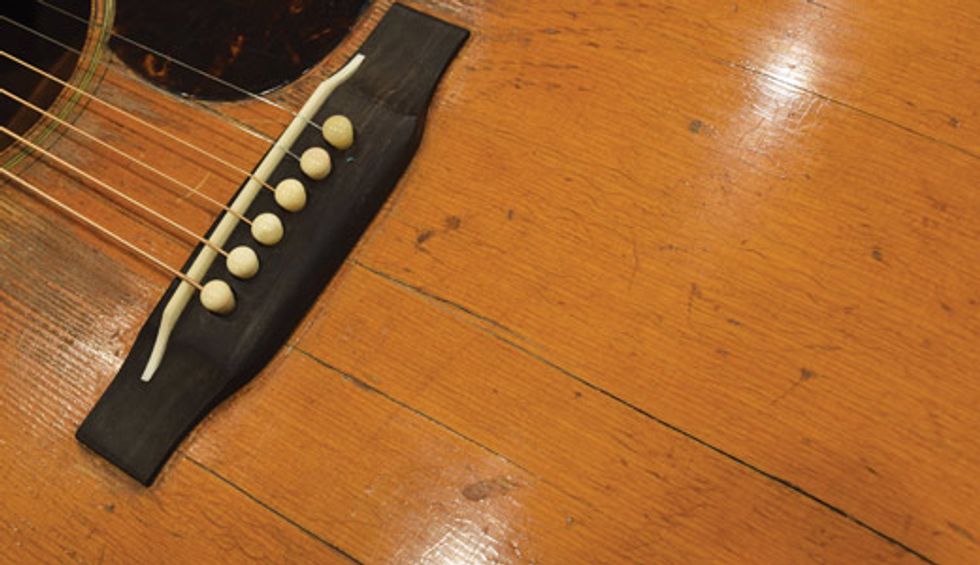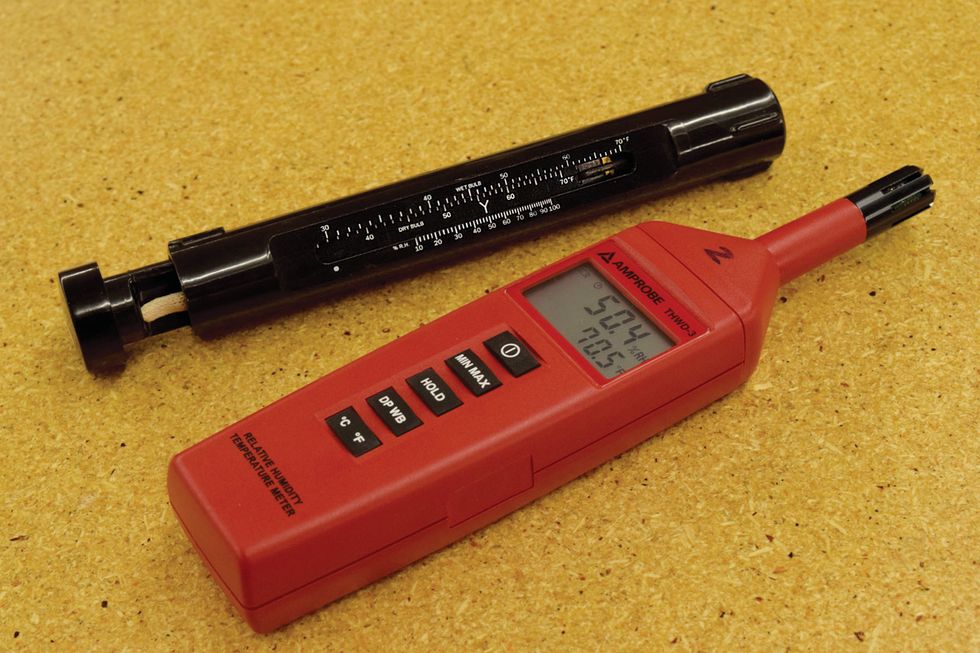What is the biggest cause of premature death for acoustic guitars? No, it’s not rambunctious children or spurned lovers. It’s humidity. And storing a guitar in an environment with improper humidity will not only shorten the life of an instrument; it’s certain to cause problems with playability and tone along the way. I consulted with Sam Guidry, our senior instructor/luthier here at the Galloup School of Guitar Building and Repair, on this very important, but generally overlooked topic. And the following is our take on what you should know to protect your guitar from humidity-related issues.
An acoustic guitar needs to live in a relatively stable environment. Most acoustic guitars are built in climate-controlled shops that maintain approximately 40 to 50 percent relative humidity. As the guitar goes out into the world, it should be kept in a range no less than 45 percent and no greater than 75 percent relative humidity. When the guitar is left outside that range for a prolonged period of time, strange things begin to happen. Recognizing the symptoms can save you from a trip to your repair shop, or worse.
The time of year is the first clue that you should monitor the humidity for your guitar. In northern climates, when the temperatures drop and the heater in your home begins to run, it will dry the air in your home and create an unfriendly environment for guitars. When this happens, it’s really time to start thinking about humidification.
needs supplemental humidification.
When wood dries out, it shrinks. This can be observed in several ways. First, you may notice that you can begin to feel the fret ends protruding slightly from the edge of the neck. This is because the fretboard is drying out and shrinking, but the metal frets do not. Another symptom is that your guitar will start to buzz. When an acoustic guitar’s top dries out and shrinks, the dome of the top will lessen, and this causes the string action to change. You may think that simply raising the saddle a bit will fix the problem, but the real issue is that your guitar needs supplemental humidification.
If left unchecked in a dry climate, an acoustic guitar will eventually crack. This most commonly happens along the grain of the top or back, but the fretboard and bridge can also suffer a similar fate in extreme conditions. If caught soon enough, many humidity-related issues can be repaired. But over time, the area around the cracks can develop a memory, and repairs will be much more difficult (Photo 1).
Photo 2 — Whether it’s an old-school sling variety or a more modern style with a digital readout, a psychrometer is a sound investment for keeping tabs on the humidity in your environment.
While dry conditions are the most problematic for us in the northern climates, areas like the Southeast U.S. have the opposite problem: too much humidity. Wood swells as it takes on humidity and this causes a guitar’s top to expand. Also, acoustic instruments will sound less responsive or dull when they take on too much moisture. So, while not as destructive as being too dry, a humid environment can definitely change the way your instrument sounds and plays.
You can’t change the weather, but there are steps you can take to ensure your acoustic guitar is properly protected through humidity fluctuation. First, keep it in the case when not being played. This is the single most important thing you can do to protect your instrument. There are also several products available to humidify the inside of acoustic instruments. Some devices feature a sponge that’s wetted and then placed in the soundhole while it’s being stored. These devices can do a lot to stabilize the humidity of your guitar. As the sponge dries and hardens, it’s telling you to add more water. Simple! Other more hands-on units offer the ability to both humidify and de-humidify, but these systems do have a life span and need to be monitored often. We also recommend that you invest in either an old-school sling psychrometer or a more modern digital psychrometer (Photo 2) to ensure you are getting accurate humidity readings in your environment.
Humidity should be a prime concern for anyone who owns a wooden musical instrument, but with a little knowledge and foresight, you can take comfort in knowing that your guitar isn’t in danger of an early demise.




















